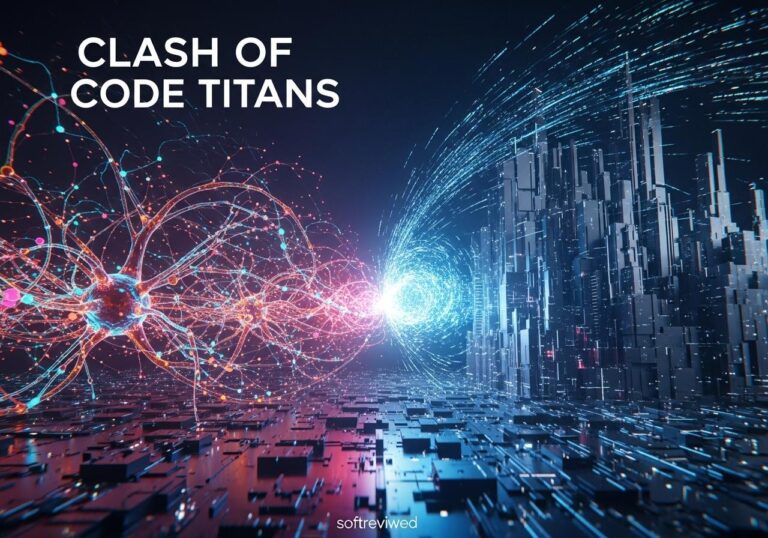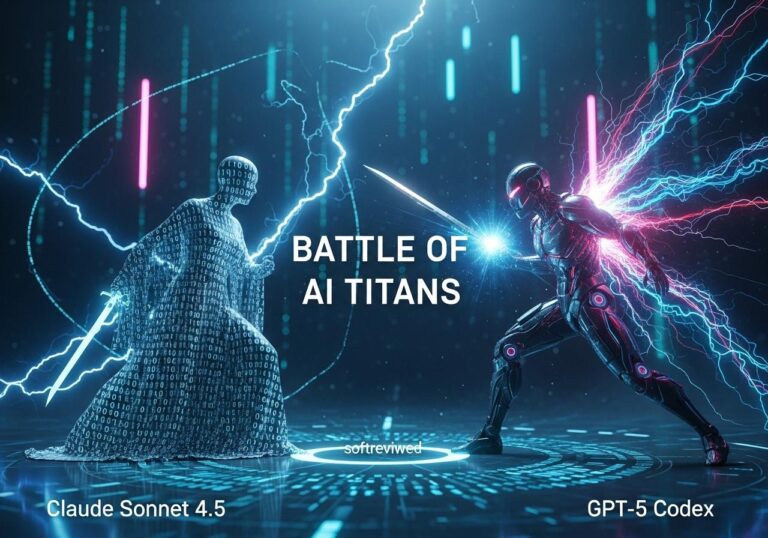🌊 Sea: Advanced Visual AI Understanding
Anthropic’s Sea model represents a breakthrough in visual understanding and problem-solving capabilities with step-by-step reasoning.
🔍 Visual Understanding & Step-by-Step Problem Solving
Sea processes images and videos to identify elements and solve complex tasks like mathematical equations, physics problems, or interactive role-playing scenarios. The model breaks down visual information systematically to arrive at comprehensive solutions.
🔄 Multi-Image Comparison & Video Analysis
Sea can analyze multiple images simultaneously and interpret dynamic video content, making it suitable for applications ranging from medical diagnostics to interactive storytelling. The model tracks changes across frames and draws meaningful connections.
📊 Math/Physics Education & Practical Applications
From solving visualized equations and diagrams to interpreting recipes and instruction manuals, Sea provides detailed step-by-step solutions for both academic problems and practical everyday tasks like cooking or DIY projects.
💭 Transparent Reasoning Visibility
Sea makes its decision-making process visible through a “Thinking” feature that breaks down conclusions into observable steps. This transparency helps users understand how the AI arrives at solutions and builds trust in its capabilities.
🔮 Future Roadmap: Grounding, Multi-Step Tasks & Visual Generation
Anthropic plans to enhance Sea’s accuracy through better grounding, improve handling of complex multi-step tasks, and expand capabilities from analyzing textographics to generating images and videos, creating a more versatile visual AI platform.
The world of AI is constantly evolving, with new breakthroughs emerging at a rapid pace. One of the most exciting recent advancements comes from Alibaba's AI research team, Qwen, with the unveiling of QVQ-Max, a cutting-edge visual reasoning model poised to redefine how machines interact with visual data. Unlike traditional image recognition tools, QVQ-Max doesn't just see images and videos; it understands them, enabling complex tasks like mathematical reasoning, multi-image analysis, and even video interpretation. This article delves into the details of this impressive AI, exploring its capabilities, potential applications, and the underlying technology that makes it all possible, including neural network quantization.
Seeing is Believing… and Reasoning: What Makes QVQ-Max Different?
Traditional AI models often treat images and videos as a collection of pixels, focusing on identifying objects or patterns. QVQ-Max takes a huge leap forward by combining visual perception with logical reasoning. This means it can analyze multiple images simultaneously, solve math problems based on visual information, and even interpret the dynamic content in videos. Imagine an AI that can not only identify a cat in a picture but also understand the complex interactions between multiple objects within a scene, that’s what QVQ-Max is designed to do. It's not just about recognizing; it's about understanding the visual world, and using that to solve complex tasks.
The Core of QVQ-Max: How It Achieves Visual Reasoning
The magic behind QVQ-Max lies in its ability to go beyond basic pattern recognition. It uses a sophisticated architecture that allows it to not just see but also to think about what it's seeing. This involves:
- Detailed Observation: QVQ-Max can parse complex images and identify key elements, whether it's a chart or a casual photo. It can pinpoint objects, recognize text labels, and highlight small details that a human might miss.
- Logical Inference: QVQ-Max can analyze visual data and draw conclusions based on what it sees. This ability to apply logic to images allows it to perform complex tasks, including mathematical and spatial reasoning.
- Multimodal Processing: The model can handle different kinds of visual input, including single and multiple images, as well as video content. This flexibility is critical for real-world applications.
The "Thinking" Feature: A Step-by-Step Look into Reasoning
Qwen has demonstrated QVQ-Max's capabilities via Qwen Chat, where users can upload images or videos and ask questions. The “Thinking” feature allows users to see how the AI processes the information step by step. This transparency is invaluable, enabling developers and researchers to understand how the AI arrives at its conclusions. This peek behind the curtain fosters trust and allows us to optimize the model for various uses.
QVQ-Max Capabilities: Beyond the Basics

QVQ-Max stands out with several key capabilities that highlight its advancement in visual reasoning:
- Multi-Image Recognition: The ability to compare and analyze multiple images simultaneously makes QVQ-Max ideal for complex tasks, like diagnosing medical conditions through scan comparisons or identifying patterns across large image datasets.
- Mathematical Reasoning: QVQ-Max can solve math and physics problems, particularly those accompanied by diagrams or visual representations. This functionality can transform how students and professionals engage with mathematical concepts.
- Video Understanding: It can interpret dynamic content in videos, understanding events and interactions over time. This opens doors for applications in surveillance, sports analysis, and more.
Quantization: The Secret Sauce Behind Efficient Processing
One of the key technologies enabling QVQ-Max's capabilities is neural network quantization. Quantization is a technique that reduces the memory footprint and computational requirements of AI models by representing weights and activations using lower-precision data types (like 8-bit integers), rather than the traditional 32-bit floating-point numbers. This reduces the model size, speeds up processing and reduces energy consumption, making models more accessible. Think of it like compressing a huge digital photo without losing its key details.
How Quantization Works
Here's a breakdown of the key concepts of quantization:
- Reducing Precision: Quantization converts values from high-precision (like FP32) to lower-precision (like INT8). This is like using fewer numbers after the decimal point in a calculation.
- Faster Computation: Operations with integers are much faster and require less processing power than operations with floating-point numbers. This allows the model to run faster and more efficiently, including on devices with limited resources.
- Smaller Model Size: Reducing the number of bits used to represent weights and activations reduces the overall memory required to store the model. This is especially important for deploying AI on mobile or edge devices.
Quantization Techniques
There are several approaches to quantization. One common method is absolute max quantization, where the maximum value within a tensor is used to scale all the elements to a smaller range. Other approaches involve vector-wise quantization, which applies this scaling on a per-row basis to address outliers. Another popular technique is affine quantization which defines the range of floating-point values and maps them to an integer field. The goal of all of these methods is to preserve as much accuracy as possible while reducing size and increasing computation speed.
Here's a brief comparison of these approaches:
| Quantization Method | Description | Handling of Outliers | Complexity |
|---|---|---|---|
| Absolute Max | Uses the maximum value in the entire tensor as a scaling factor. | Sensitive | Simple |
| Vector-Wise | Uses the maximum value in each row as a scaling factor. | More Robust | Moderate |
| Affine | Maps a defined range of floating-point values to an integer field. | More Robust | Moderate |
Quantization plays a vital role in making models like QVQ-Max more accessible, deploying them on more devices, and enabling applications where resource-constraints are a factor.
Is DeepSeek’s AI Model Capable of Competing with Alibaba’s QVQ-Max in Visual Reasoning Applications?
DeepSeek’s AI model shows promising capabilities in visual reasoning applications, positioning itself as a strong competitor to Alibaba’s QVQ-Max. As industries increasingly rely on advanced AI technologies, the potential for deepseek ai profits becomes clear, driving innovation and enhancing user experiences in various sectors.
From Learning to Life: Practical Applications of QVQ-Max
QVQ-Max’s advanced visual reasoning capabilities open up a wide range of potential real-world applications across various industries:
- Education: QVQ-Max can help students with math and physics by solving complex problems with diagrams and visual aids. It can make learning more intuitive.
- Healthcare: Analyzing medical images like X-rays, MRIs, and CT scans for diagnosis becomes faster and more accurate with the multi-image processing abilities of QVQ-Max.
- Creative Industries: From generating outfit combinations based on wardrobe images to providing step-by-step guidance for cooking based on recipe photos, QVQ-Max can assist with various creative and everyday tasks.
- Robotics: Robots equipped with QVQ-Max can better understand and interact with their environment by interpreting complex visual information.
- Accessibility: QVQ-Max could be used to build assistive technologies for people with visual impairments by providing a detailed understanding of the visual world through audio descriptions and other modalities.
The Road Ahead: What’s Next for QVQ-Max?
While QVQ-Max is already impressive, Qwen has made clear that this is just the first iteration, with much room for improvement. Here are the key areas of development they are focusing on:
- More Accurate Observations: Improving recognition accuracy by using grounding techniques. This involves validating what the model observes from visual content by referencing it with additional information and context.
- Visual Agent: Enhancing the model’s ability to handle multi-step and complex tasks, such as operating smartphones, computers, and even playing games. This will transform QVQ-Max into a more versatile tool.
- Better Interaction: Expanding beyond text-based interaction to include modalities like tool verification and visual generation, making the user experience richer.
These improvements aim to make QVQ-Max a practical visual agent that can solve real-world problems.
Combining Vision and Intellect: QVQ-Max's Impact
QVQ-Max isn't just another AI upgrade; it's a shift in how we think about visual AI. By combining "vision" and "intellect," it can analyze, reason, and even complete creative tasks. As it continues to evolve, it's likely to transform how we interact with machines and with visual information itself. Its impact will be seen across various sectors, making complex tasks simpler and unlocking new possibilities.
👉 Try out QVQ-Max for yourself! Visit the Qwen Chat interface to explore its visual reasoning capabilities for free. ⬅️







